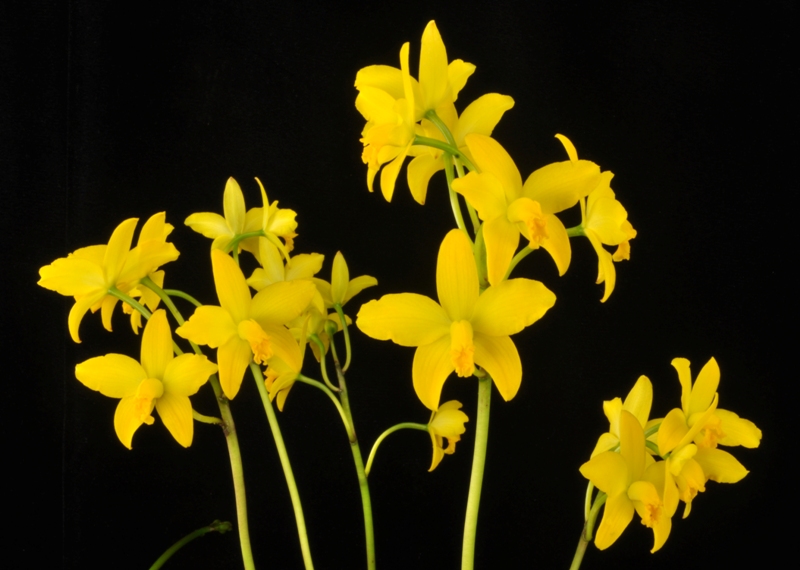
© 2018 Glen Barfield
Cattleya briegeri 'Palila' AM/AOS, until recently known as Laelia briegeri, one of the diminutive but brightly-colored "rupicolous Laelias", and much loved by hybridizers for breeding compact yellows
"Life on the Rocks: The World of Rupicolous Orchids"

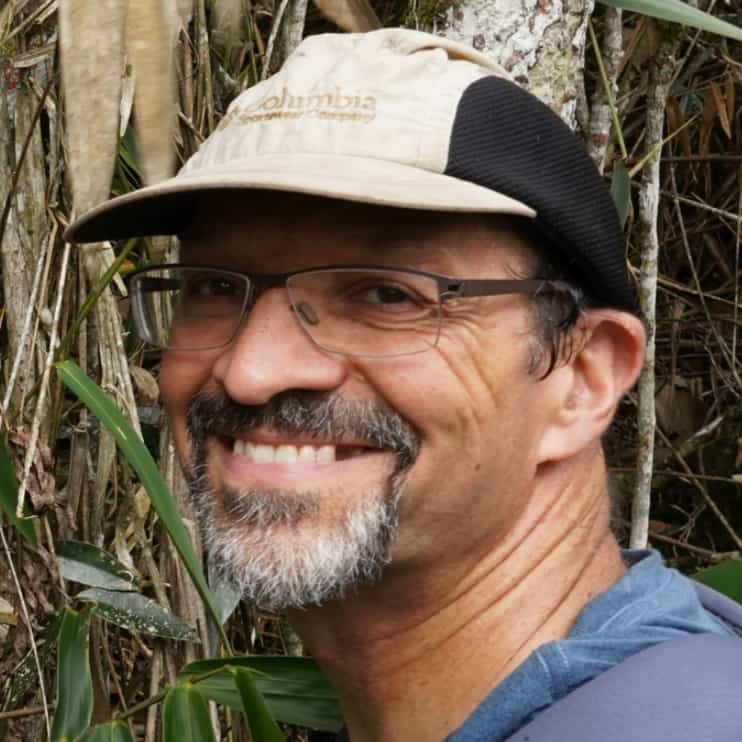
Ron Kaufmann is currently the chair of the American Orchid Society Conservation Committee, chair of the San Diego County Orchid Society Conservation Committee, and a founding director of the Orchid Conservation Alliance. He has been growing orchids for more than 25 years and has travelled extensively to view orchids in the wild in Asia and South America, particularly in Brazil, Ecuador, and Colombia.
His presentation will explore the habits and habitats of orchids that grow on rocks, with a focus on Brazil. A surprising number of orchids grow in the wild on rocks, cliff faces, etc., sometimes clinging to the rocks, or else growing in crevices in and between the rocks. That mode of growth is known to botanists as "rupicolous" (Definition: "living or growing on or among rocks" — Collins English Dictionary). There are also many orchids that are found growing both in trees (thus, growing as "epiphytes") and, in the same habit, on rocks (thus, as "lithophytes").
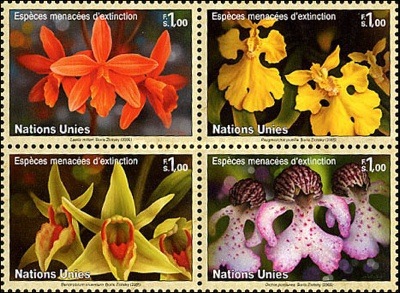
United Nations stamps showing endangered orchid species, including (upper left) Cattleya milleri, formerly a Laelia, a sort of poster child for endangered rupicolous orchids in Brazil, since it had the misfortune to live on rocky ledges in an area rich in iron ore. Whether it survives at all in the wild is now uncertain, as a result of strip-mining.
It stands to reason that there may be some differences in how "lithophytic" and "epiphytic" orchids behave in captivity. Which species need special conditions, such as growing in granite, marble, or limestone chips? How deep should the medium be? What do they need in terms of water, fertilizer, top-dressing, or control of the pH? Some of your orchids, unknown to you until now, might prefer to grow on rocks in nature. Would they thrive and flower better in captivity if they were grown in a way that more closely matched these preferences?
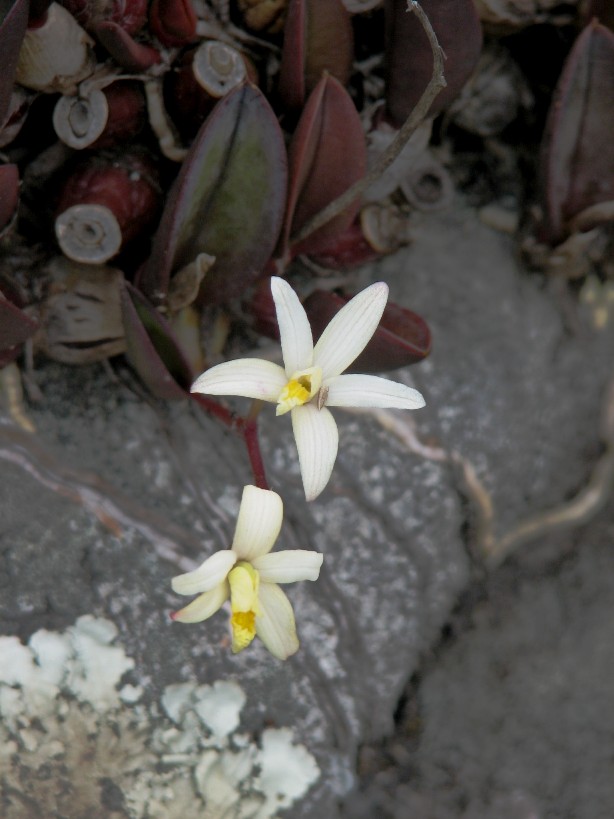
© Ron Kaufmann
Cattleya fournieri in habitat
We might ask, too, whether there are special considerations for the conservation of orchid populations in rocky environments. The "rupicolous" lifestyle is little known to most orchid hobbyists, let alone the general public who is interested in conservation.
Ron is a marine biologist by training, and his scientific work includes studies of Antarctic and deep-sea ecosystems as well as marine communities in coastal Southern California. His orchid collection began with a reedstem Epidendrum and progressed to a diverse assemblage that contains mostly species orchids. Ron has a long-standing interest in conservation and has been a member of the SDCOS Conservation Committee for nearly 25 years, and chair since 2004. Since 1991, the Conservation Committee has awarded over $260,000 to support projects in 23 different countries. Ron also helped to found the Orchid Conservation Alliance and serves on the boards of the OCA, Orchid Digest Corporation, and Fundación EcoMinga (an Ecuadorian conservation organization, see below).
Most of Ron’s orchids are grown in a 36 × 24 foot greenhouse and several outdoor shade-covered areas around his house in San Diego. Friends have suggested that he build a second, much larger greenhouse to accommodate the many plants that often make walking through his greenhouse an exercise requiring extensive training in gymnastics and yoga to avoid serious injury. Thus far, this recommendation hasn’t been followed, although the temptation is always there.
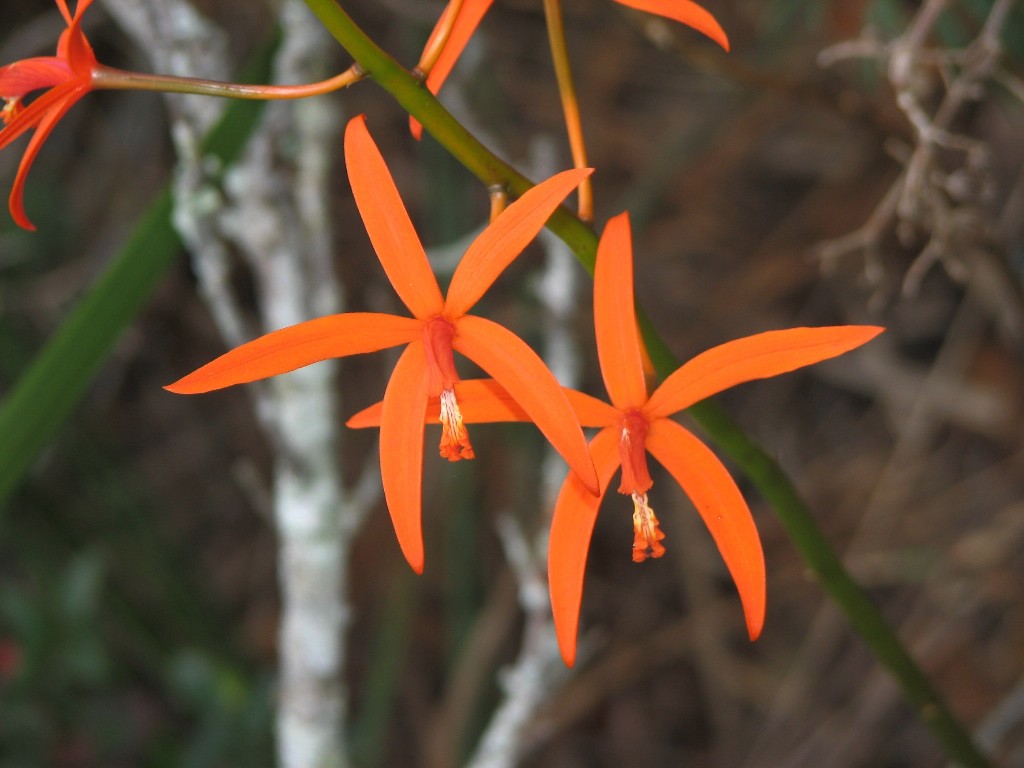
© Ron Kaufmann
Cattleya sanguiloba in habitat
The Orchid Conservation Alliance: How a Few California Orchid Hobbyists Made a Difference
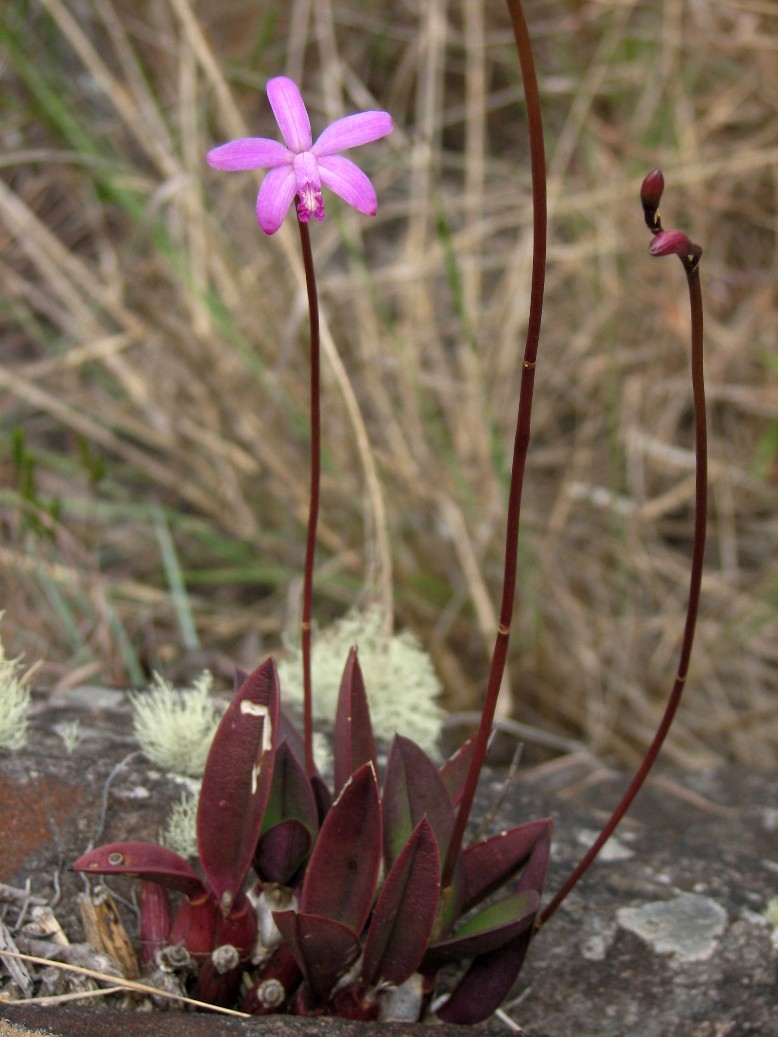
© Ron Kaufmann
Cattleya caulescens in habitat
The idea of developing a way to fund orchid conservation projects grew out of discussions among the members of the San Diego County Orchid Society, around 1990. Soon a Conservation Committee was formed. Peter Tobias was its first chairman. A plan was put into motion by the committee members to raise funds by selling some of their excess plants. The first sale, in 1991, succeeded so well, that the program has continued to this day. Seeking to extend the reach of these efforts, Peter created a spin-off, the Orchid Conservation Alliance, an all-volunteer organization with no paid staff, but with a clear mission. Peter has since retired from his position as Associate Professor of Immunology at The Scripps Research Institute in La Jolla, California.
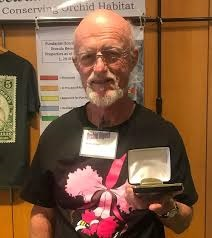
The Alliance takes great pains to select projects that have a high probability of long-term success. Anyone who has spent time in Latin America will have encountered stories of endless legal squabbles about land ownership. In some places, squatters have successfully claimed ownership rights for properties whose ownership was already well established by legal titles. OCA has persisted in spite of all the obstacles. Partners have been found for funding, procuring property, and establishing long-term management. In other words, money is one ingredient, but conserving orchids in the wild involves a lot more than money. OCA has proved that orchid conservation is feasible even without huge resources, and they have developed a process to make it happen.
At the June 9, 2018 Orchid Digest Speakers’ Day, Dr. Harold Koopowitz, Vice President of the Orchid Digest Corporation, announced that the Publication Committee had selected Peter Tobias, founder and President of the Orchid Conservation Alliance, for the prestigious Orchid Digest Medal of Honor for Meritorious Service to the Orchid World, for his efforts and those of the OCA to create protected reserves where wild orchids can continue to live and blossom.
EcoMinga Foundation and the Dracula Reserve
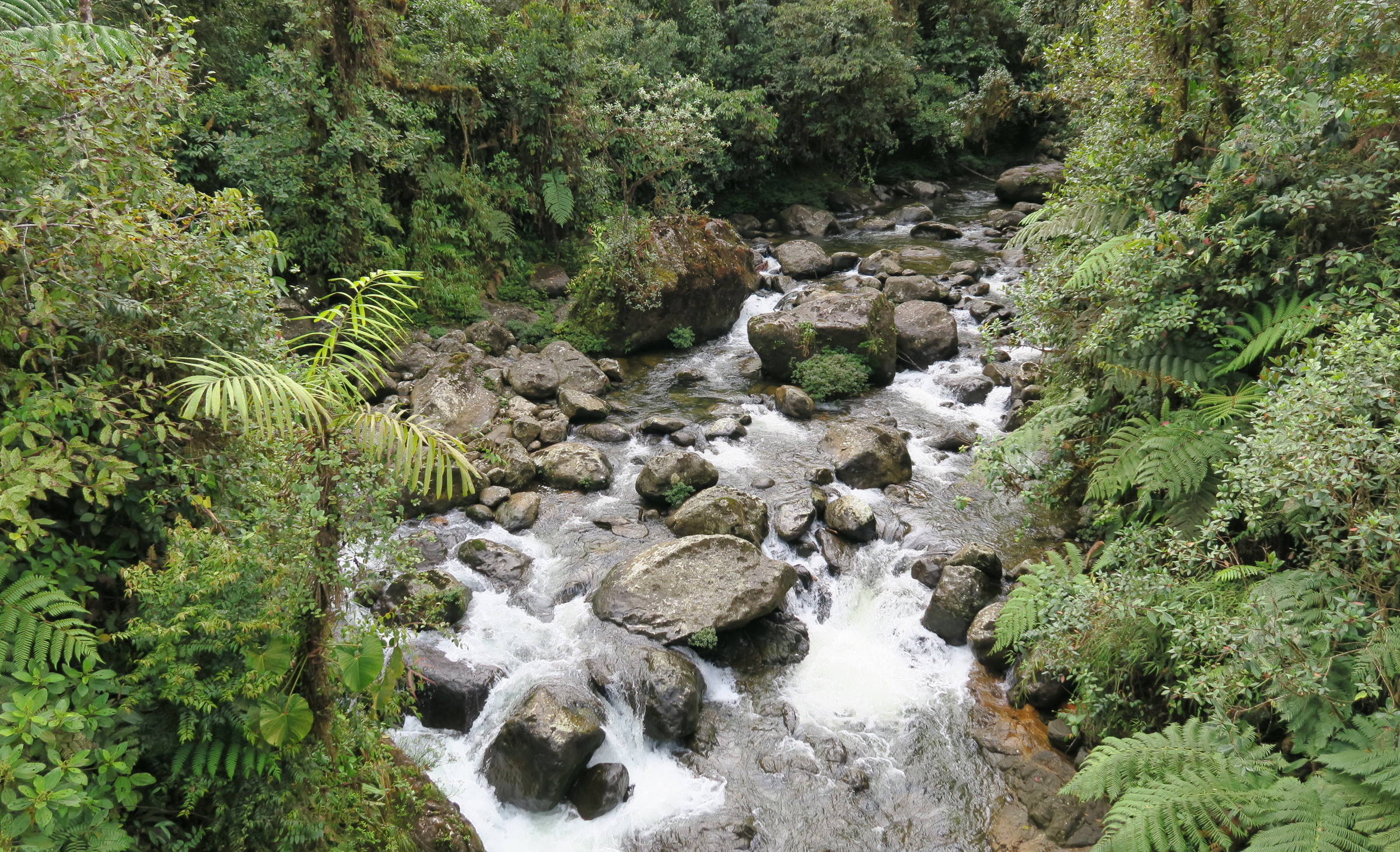
© Reserva Drácula
Probably the most widely known of the projects for which the Orchid Conservation Alliance has provided funding is the Reserva Drácula ("Dracula Reserve") in Carchi province, in the far north of Ecuador. While the project likely receives most of its publicity because of its sensational name, as well as the sensational orchids named after the quasi-mythical Count Dracula, the scientific, cultural, and humanitarian merit of the project is exceptional.
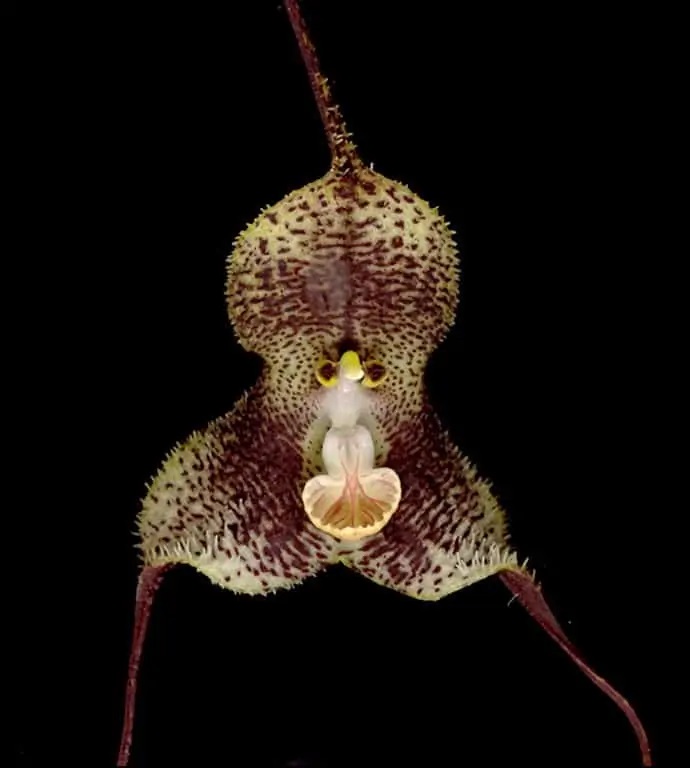
© Reserva Drácula
The Dracula Reserve contains the only known populations of several Dracula species in Ecuador, such as this one, Dracula fuligifera
The Dracula Reserve, owned and managed by a local foundation called EcoMinga, consists of a series of properties which should eventually be connected by additional land acquisitions, on one of those ecologically diverse mountain slopes that are so charactaristic of the Andes. "Diversity" here is so extreme, there is really no word for it. The landscape was formed, and continues to be formed, through geological uplift and erosion, punctuated by catastrophic landslides and other upheavals, each such event providing an opportunity for a new cycle of ecological succession and the evolution of new ecological niches and new species. These are the kind of habitats where a botanist walks into a forest and comes out with five new tree species, even though Ecuador is fairly crawling with naturalists and has been that way for a very long time. Any road through the wild areas of Ecuador (or any river through the parts of Ecuador where there are no roads) will give the observant traveler a stunning view of geology and nature at work; the habitats are often visibly different from one mile to the next. But in Carchi province, the geography is even more extreme. Elevations within this province range from a mere 16 feet in the far north to over 16,000 feet toward the other end, near the provincial capital of Tulcán, the highest city in Ecuador, at nearly 10,000 feet — all within a distance of about 110 miles.
The story of EcoMinga and the Dracula Reserve is worth following. The main web site at reservadracula.org is a good place to start, but for the details that really tell you about the local situation, the new discoveries, and the science that is coming out of the forest, the EcoMinga blog is the place to go. The blog is currently authored by Louis Jost, head of the foundation. It is always clearly and accurately written in both English and Spanish, well illustrated with photos and video clips, and with excellent links to other resources.
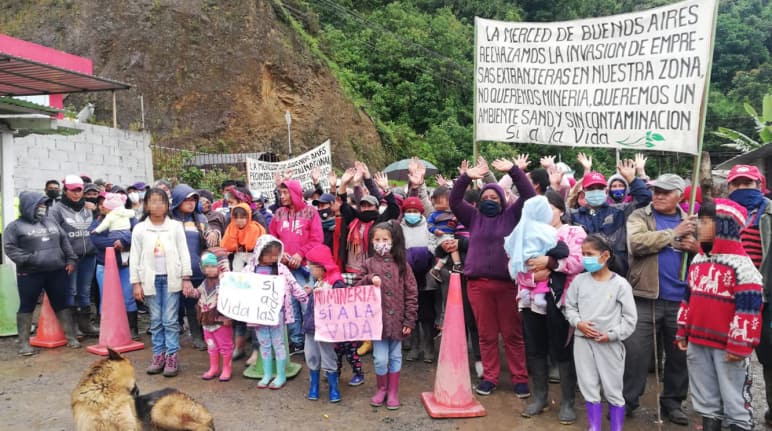
© Bonaerenses Unidos Protectores del Ecosistema—BUPROE
Citizens of the parish of La Merced de Buenos Aires, in the province of Imbabura, Ecuador, not far from the Dracula Reserve area to the north, protest illegal mining activities. "Yes to Life!", say the signs.
The EcoMinga foundation is well aware of the various risks to neo-tropical forests and to the specific risks in the area around the Dracula Reserve. One of those risks that gained international media attention is gold mining. The government of Ecuador established a legal process for prospecting and mining in some areas, but it was not long before mining operations sprang up without following the legal permitting process. One of the nature reserves in the area appealed to the government, and the case eventually was decided in favor of "nature", due to a provision in the Ecuadorian constitution that establishes nature itself as a right and a national priority. That brought in law enforcement, but the threat of illegal mining activities remains a significant threat that has to be managed by EcoMinga — for example, by increased surveillance and more rangers. Once the possible existence of gold in the area was public knowledge, the risk of serious ecological damage from mining became a fact of life that will not soon fade. OCA and EcoMinga are currently seeking additional funding to manage this risk. Notably, there are a few large parcels of land adjacent to the reserve that could easily end up in the hands of mining companies. EcoMinga is urgently seeking funds to purchase these properties.
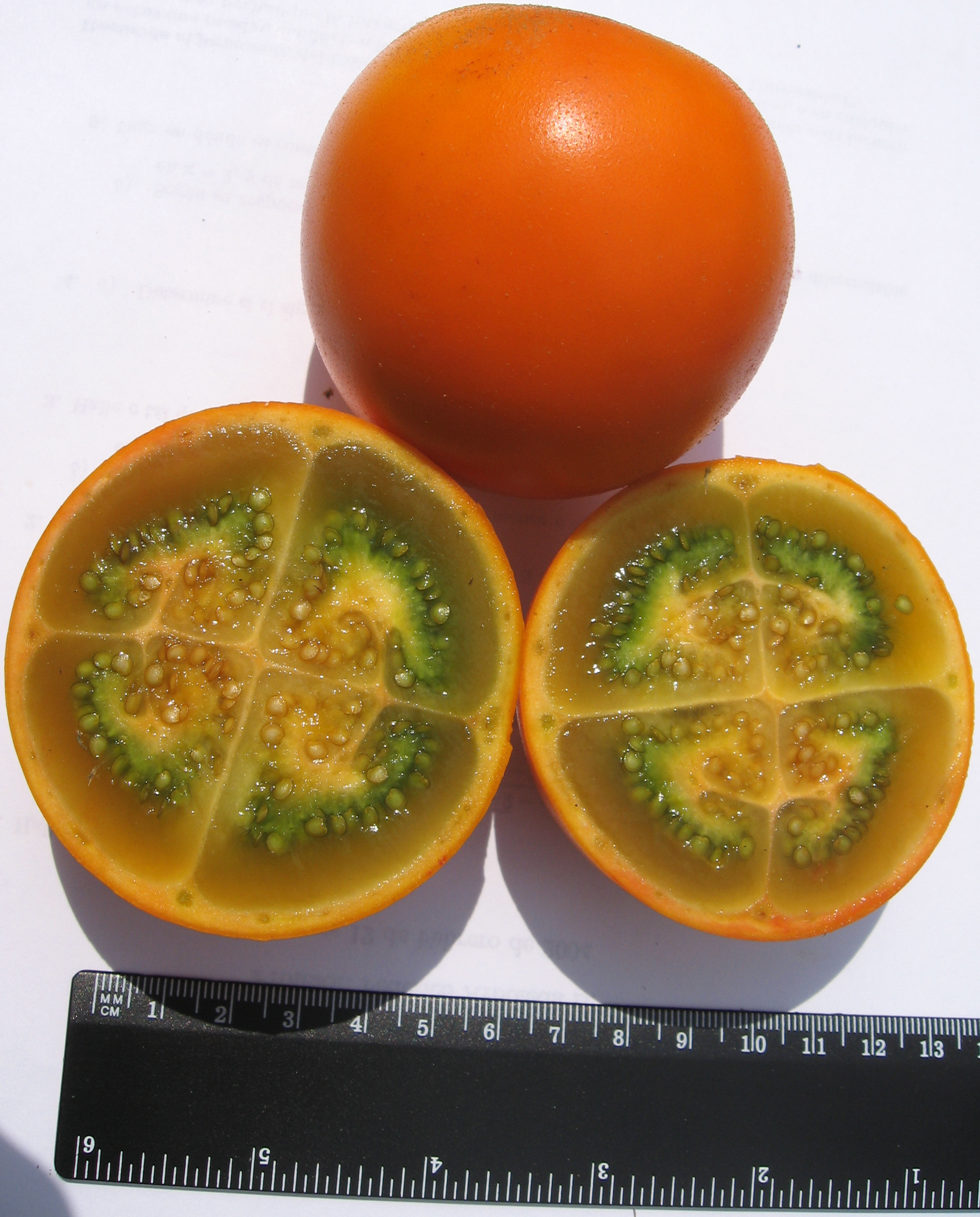
Naranjilla fruits (Solanum quitoense, Solanaceae)
Another risk, almost unique to the Andes, turns out to be the clearing of forest plots to grow naranjilla (Solanum quitoense) a delicious small fruit somewhat similar to a tomato or tomatillo (the Spanish name means "little orange", and the fruit is indeed round and orange-colored). One of the best "mystery juices" the traveler may be served with meals in the ecolodges in the Andes is the juice of the naranjilla. When you ask what it is, the chef will rarely be able to show you one, because they were all turned into juice! But most kitchen gardens in the area will probably have a few plants. However, the difficulty with growing them as a farm crop is that the soils are quickly depleted, and the farmer will probably need to use pesticides. After a couple of years, the soil will likely be exhausted, and the plot abandoned. While abandoned farm plots and cattle pastures do regenerate quickly in the Andes, what comes back will not be the complete tropical forest until many decades later. Ecological succession takes a long time, even in the tropics, and the end result is not guaranteed. The risk is that individual species of plants and animals that were rare to begin with, or that have special requirements or interactions with other species, will never return. These cleared and abandoned properties also disrupt the movement of animals, and plants as well (by interfering with seed dispersal facilitated by animals, for example), from adjacent areas, and they frequently result in erosion and changes in drainage that will damage downslope habitats. EcoMinga has noted that the total worth of these plots, which can only be farmed for naranjilla for about two years, is about the same as what the farmer would get by selling the same plots to EcoMinga — not a complete solution for the needs of the local population by any means, but an important component in developing a sustainable local economy.
Funding for EcoMinga, beyond its local sources, has come from the Botanic Garden of the University of Basel, Switzerland, and Orchid Conservation Alliance, and another US-based foundation, the Rainforest Trust. OCA, of course, has a special interest in the orchid flora in the reserves supported by EcoMinga, but all of the funding partners recognize the need to preserve the whole ecosystem.
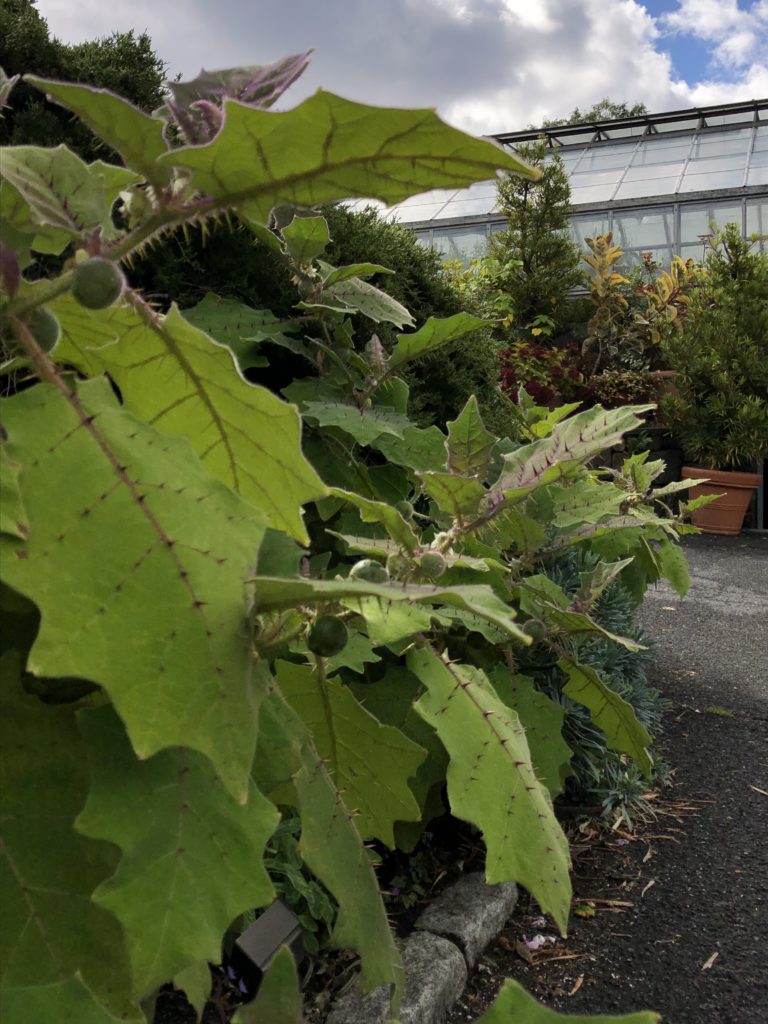
Naranjilla plants. These will probably grow well in Southern California, especially near the coast.